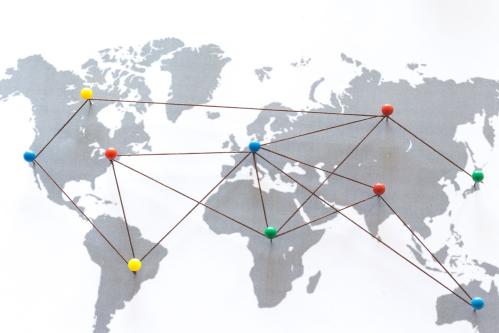DC KIDS COUNT, housed at the nonprofit DC Action for Children, is the DC chapter of a nationwide network of local-level organizations aiming to provide a community-by-community picture of the conditions of children. The 26 year-old project is funded by the Annie E. Casey Foundation and its aim is to provide high-quality data and trend analysis as well as help local governments monitor budget and legislative decisions based on evidence of what works for children and families. As we pointed out in our recent papers and a blog, developing reliable and comprehensive data is a critical step to building effective community partnerships and producing outcomes that improve economic mobility and health in a neighborhood.
We discussed these issues with HyeSook Chung, Executive Director of DC Action for Children.
Q. Please summarize the history of the DC Kids Count project. What motivated it, and how it has evolved over the last years?
A. As part of the nationwide Kids Count network, each chapter tracks a number of indicators on child and family well-being through an online database called Kids Count Data Center. Each chapter also releases a yearly data book which summarizes the state of child well-being within their state or locality. When DC Action for Children became the host of DC Kids Count in 2012, I wanted to rethink the way we presented our data to move beyond the traditional print format into the exciting realm of visualizing data. This led to the beginning of our partnership with DataKind, a group of dedicated pro-bono data scientists who worked with us to create an interactive, web-based data tool that maps out indicators of child well-being across DC’s 39 neighborhood clusters.
We know that the neighborhood children grow up in, and the resources they have access to, plays a huge role in shaping children’s future opportunities. The maps we created with our Data Tool 2.0 reveal sharp disparities in DC neighborhoods: some DC neighborhoods are wealthy and have many assets, while others are characterized by high levels of poverty. The many challenges that come with high poverty neighborhoods include: poorer performing schools, more crime, and less access to libraries, parks, and healthy foods.
Q. What type of indicators do you gather? How many years does the data cover? What level of granularity does the data have?
A. We track a variety of indicators of child well-being, including demographics, economic well-being, health and safety. The data is housed online in two places: The KIDS COUNT Data Center and our Data Tool 2.0. The Data Tool 2.0 maps the most recent available data at the neighborhood cluster, while the Data Center allows for a wider range of geographies (citywide and ward level) and different timeframes. Many of the indicators have data from 1990 to the present.
Q. How do you measure the data tool’s impact on policy and legislation?
A. We have made it a priority to conduct internal evaluations to assess the utilization of the online tool, but we also believe that measuring the tool’s impact must go beyond traditional web analytics. We regularly use the Data Tool 2.0 in our work with city officials and direct service providers to offer an overview of the social context in the city’s different neighborhoods.
In a city where the allocation of resources is often guided by personal relationships and old-school politics, it is important to show clearly whether budget decisions are aligned with the needs of our children. We believe that our Data Tool 2.0 project can bring much needed transparency to the allocation of the DC government budget and help achieve agreement.
Q. The DC Kids Count project is helping build data capacity across organizations, with the aim of creating a more “data-literate” city. Could you tell us about some of these initiatives?
A. Businesses like Amazon and Netflix increasingly focus on finding “actionable” insights from their data. For them, “big data” analytics can help answer tough business questions. With the right platforms for analytics, they can increase efficiency or even improve operations and sales.
In a similar manner, we at DC Action for Children believe that big data opens up the opportunity for us to improve and reshape our strategy and decision making process to better align services with the needs of DC children in the same way Amazon or Netflix does with their customers.
For instance, we are offering the Child and Family Services Agency technical and data analysis support for their Healthy Families Thriving Communities Collaboratives, which are a citywide network of community-based organizations designed to embed family supports in their communities. Their mission is to strengthen and stabilize families and to prevent child abuse and neglect by offering services in the form of case management and support. We use KIDS COUNT data at the ward and neighborhood levels to highlight needs in the community and inform their planning. This encourages the Collaboratives’ staff to look at data differently—integrating it as a vital part of their program planning and strategy.
Q. What are some of the obstacles and challenges you face in integrating the data, and updating it?
A. Historically, our data analysis looked at more traditional indicators, such as program enrollment and the number of child welfare cases. But now we think we can use our access to big data to pull out patterns within our datasets and help guide the decisions of the city administrators. For example, if we are trying to prevent future child abuse cases, we can look at patterns analyzing family and child data in specific neighborhoods. We can use the type of predictive analysis practiced in the for-profit business to help us serve DC children more efficiently and effectively.
One of the most significant obstacles we face is ensuring that the indicators are up-to-date. This can be an issue with government agencies since some of them are slow in their release of new data. Moreover, there is also no standard format across local agencies for how data is collected and released. Furthermore, data is often aggregated at different geographical units, like zip codes or census tracts. To get the data ready to upload to our Data Tool, we must recalculate the data into neighborhood clusters.
Q. What policy changes would help produce better data-sharing ecosystems?
A. DC has in many ways demonstrated leadership in data sharing. The Office of the Chief Technology Officer works to make a large variety of datasets publicly available. We have also seen large investments over the years to create new data systems that track progress and service delivery for different agencies. But our city can do more to promote a data-sharing ecosystem. So can other cities.
While multiple agencies are adopting innovative data systems, the systems are often siloed and do not speak to each other. Moreover, since data is tracked differently across agencies, based on needs and requirements for reporting, it is difficult for agencies to share data both publicly and internally. It is also often difficult to get access to de-identified disaggregated data for richer analysis. We are glad that many agencies recognize the value of robust data collection, but more data transparency policies would give us a better understanding of the challenges that lie behind improving the wellbeing of children in the city.
Q. What are the next steps for the DC Kids Count project, and how do you expect it to grow over the next few years?
A. We just finished wrapping up some of the final work on our DataTool 2.0. In terms of next steps, we are working on a handbook that explains how we created our Data Tool so that other Kids Count chapters and organizations can replicate and adapt our tool.
We would also like to add local budget data to the asset maps to see if public investments align with the neighborhoods that need it the most. This would give us a more nuanced understanding of the geography of DC budget investments, including inequities in investments by geography and demographics.
Big data analytics has changed the way we focus our priorities and engage in business practices. I’m committed to this movement. I think that, through big data, we can also revolutionize the way we do policy.
***
In conclusion, DC Kids Count, housed at the nonprofit DC Action for Children, belongs to a larger, nationwide group of organizations helping to better coordinate regional development through data-driven decision making. By centralizing different government databases, and providing real-time, community level data, DC Kids Count can help local government entities allocate their resources more efficiently and creatively and help foster place-conscious strategies. The process behind compiling the data also illustrates many of the challenges—data sharing, interoperability of data systems, access to real-time data involved in building “data- sharing ecosystems.”



Commentary
Building a more data-literate city: A Q&A with HyeSook Chung
December 15, 2015